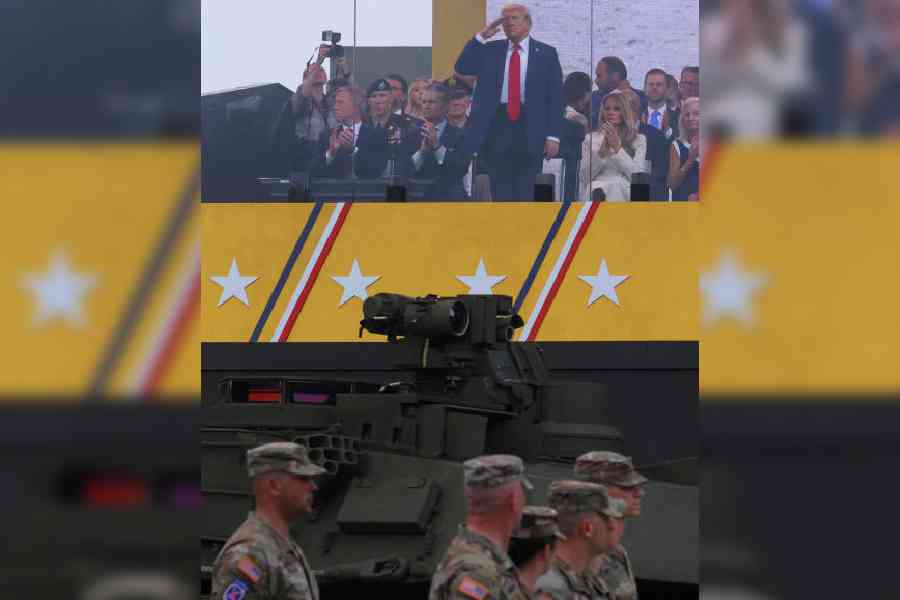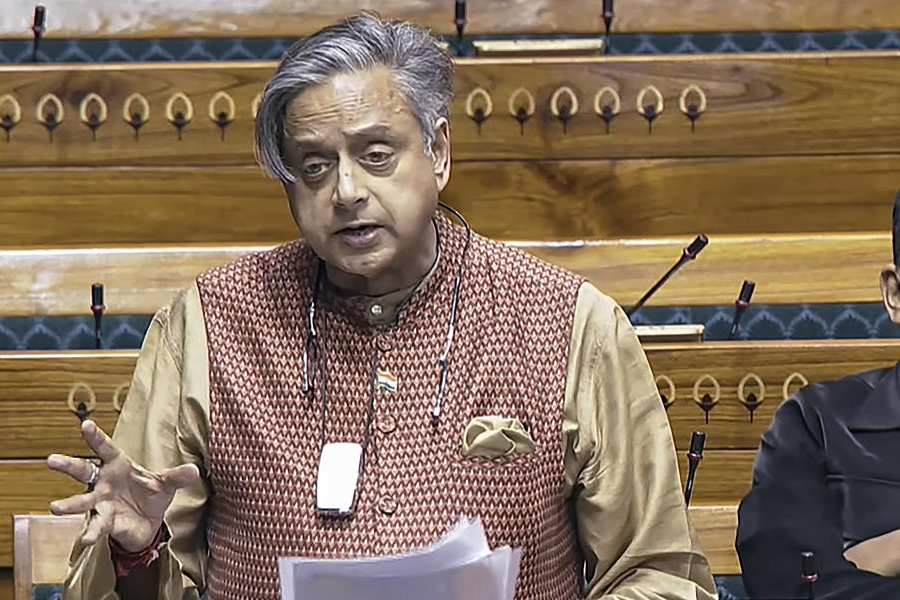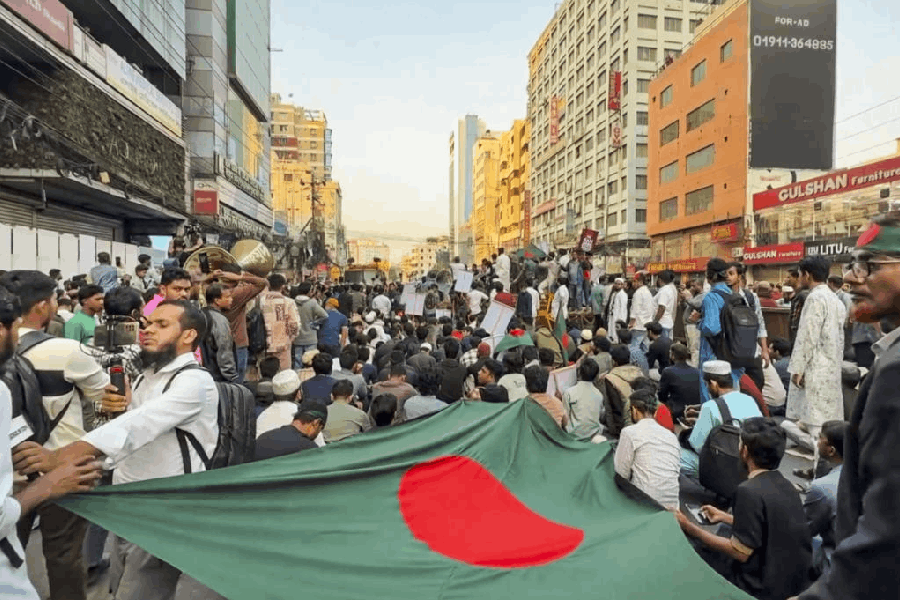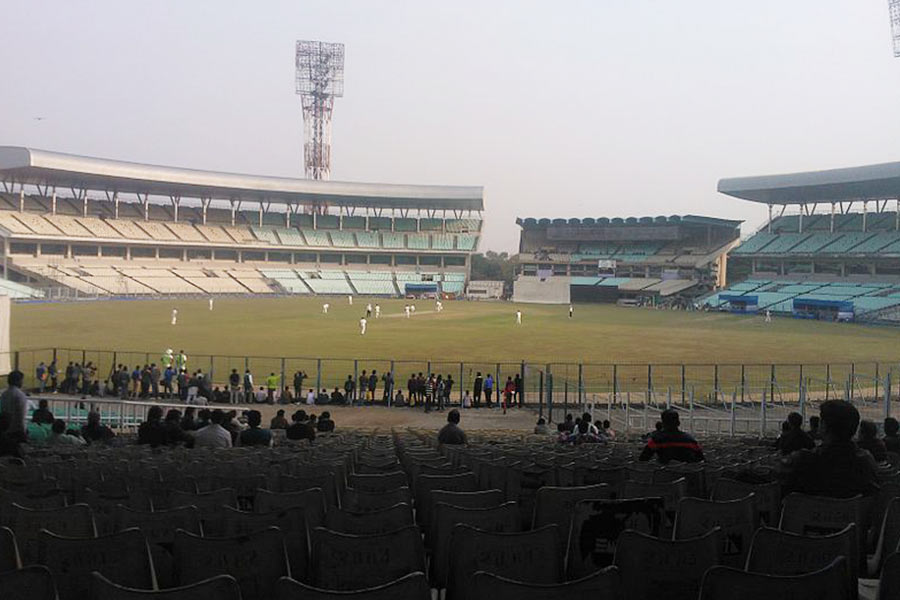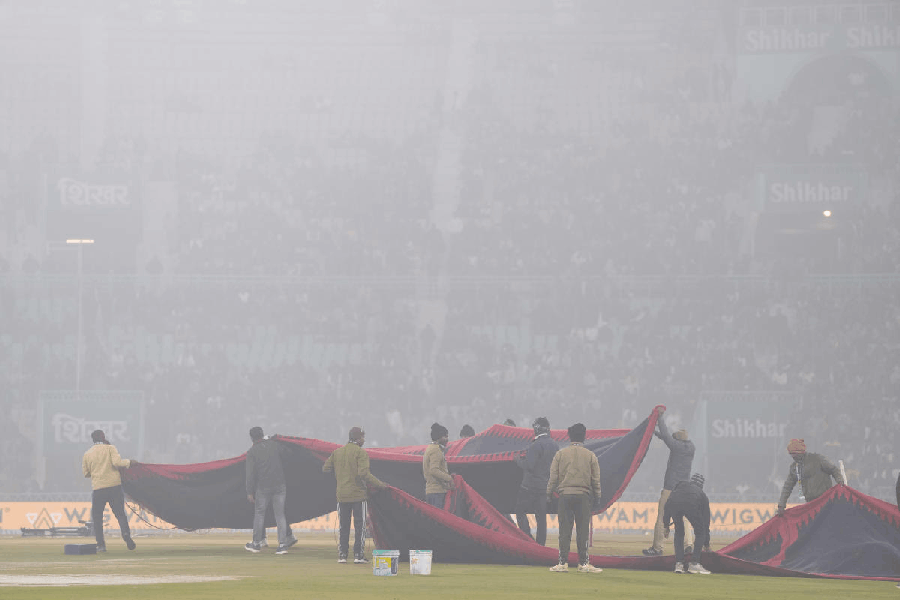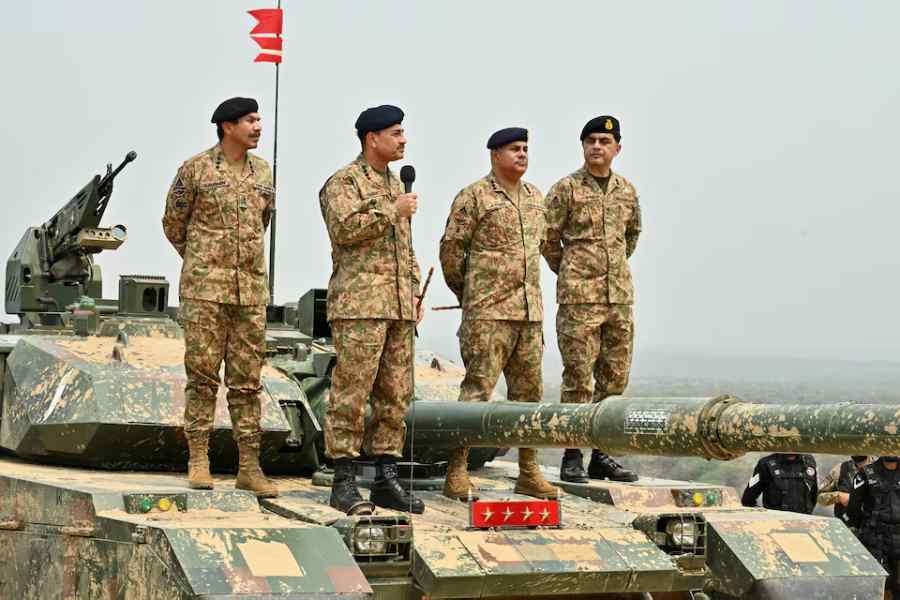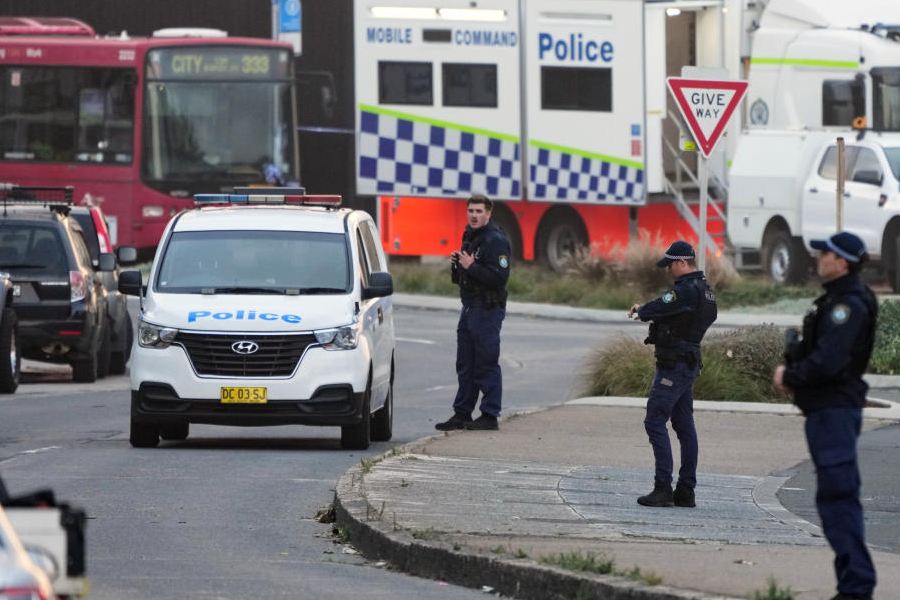President Donald Trump presided over a show of American military might in the nation’s capital on Saturday evening, a celebration of the 250th anniversary of the US Army that became a test of wills and competing imagery, with demonstrators around the country decrying his expansion of executive power.
Trump sat in a reviewing stand on Constitution Avenue as armoured vehicles dating from two World Wars and overflights of 80-year-old bombers and modern helicopters shook downtown Washington. The city was locked down, divided by a wall of tall, black crowd-control fences designed to assure that the parade, the first of its kind since American troops returned from the Gulf War in 1991, was an uninterrupted demonstration of history and American power.
It went off without a hitch, but also without even a nod to the current moment. When Trump left his seat between his wife, Melania Trump, and defence secretary Pete Hegseth, it was to swear in new soldiers — “Have a great life”, he told them after the brief ceremony — and then, at sundown, to recall the army’s greatest moments.
He invoked George Washington and recalled Gettysburg. Yet he spoke more to the army’s power than to its purpose. “Time and again, America’s enemies have learned that you threaten the American people, soldiers are coming for you. Your defeat will be certain, your demise will be final, and your downfall will be total and complete.”
Hours before he left the White House, the day had already encapsulated the sharpness of America’s divide over immigration, free speech and Trump’s determination to reshape the government, universities and cultural institutions to adopt his worldview.
By design, military parades are part national celebration and part international intimidation, and Trump has wanted one in Washington since he attended a Bastille Day parade in Paris in 2017. Formally, the parade celebrates the decision by the Second Continental Congress on June 14, 1775, to raise a unified, lightly armed force of colonialists after the shock of the battles with British forces at Lexington and Concord. That army, which George Washington took command of a month later, ultimately expelled the far larger, better-armed colonial force.
But no celebration of history takes place in a political vacuum. And protesters in large cities and small towns from Seattle to Key West showed up in overwhelmingly peaceful demonstrations against how Trump was making use of the modern force. His decisions over the past week to federalise the National Guard and call the Marines into the streets of Los Angeles, in support of his immigration roundups, have supercharged a debate about whether he is abusing the powers of the commander in chief.
It was a split-screen show of force. Roughly 2,000 protests, under the slogan “No Kings”, pushed back against what the crowds decried as authoritarian overreach. While the big-city rallies attracted the attention and the cameras, smaller events were organised in rural areas, including three dozen in Indiana, a state Trump won last November by 19 points.
In Dallas, another stronghold of Trump’s support, crowds of protesters stretched across a wide street for at least five blocks. The Houston protest looked more like a block party, with dances to Mexican music and cool-offs in a fountain.
But in Los Angeles, which has seen a week of demonstrations, car-burnings and episodic violence, a large crowd gathered downtown, spreading over several city blocks. As the evening wore on and an 8pm curfew approached, tensions rose, with the police using chemical irritants in an attempt to disperse some protesters from a complex of federal buildings and officers on horseback charging towards groups of others and swinging their batons to break them up.
Back in Washington, the organisers of the America250 events, for which this is the first big production, sold a “dedicated VIP experience” to large donors, and red MAGA hats to the President’s supporters. It is also Trump’s 79th birthday, though he has insisted the celebration is about the army, not him. Organisers expected veterans of the Korea and Vietnam conflicts to turn out along with those who fought in Afghanistan and Iraq, two wars that Trump — and many Democrats — have declared were a waste of lives and money.
Trump has defended the spending of as much as $45 million — including the cost of repairing Washington’s streets from the damage expected from rolling 60-tonne tanks down Constitution Avenue — as a small price to pay to stoke national pride and to remind the world of America’s hard power. He told an interviewer on NBC last month that the price tag was “peanuts compared to the value of doing it”.
To some of Trump’s critics, it was conduct unbecoming of a superpower. In the first Trump term, that view was shared by military leaders who dissuaded him from replicating the French show of force. They have since been ousted, replaced by true believers like Hegseth.
Every minute was broadcast on Fox News and other conservative networks and streaming services, while the legacy cable networks kept to their ordinary programming. One Fox broadcaster declared the parade showed that “America means business”, and another argued that the show of force rolling alongside the Mall would provide “succor to our allies” and “strike a little bit of fear and a little bit of deterrence” into American enemies.
New York Times News Service

